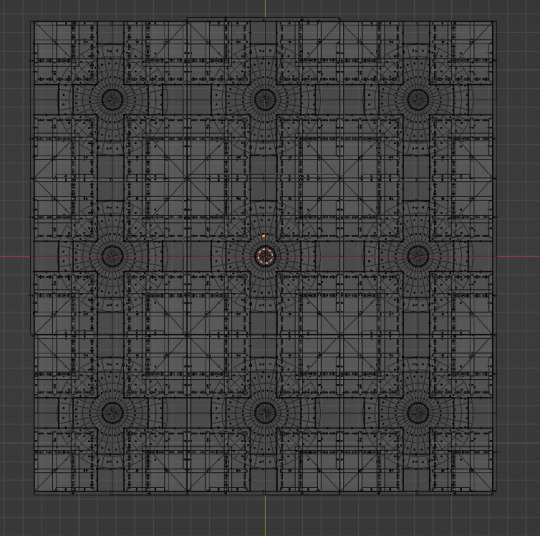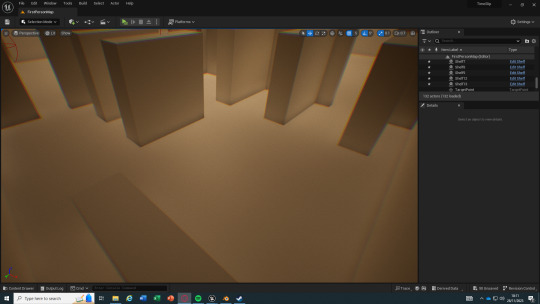Don't wanna be here? Send us removal request.
Text
N64 Controller
This project is inspired by the old N64 games and follows the theme of alternative control. For this reason, this game is going to be controlled via an N64 controller.
Starting with the controller I had to figure out what option would work the best. I could use an original N64 controller with a USB convertor, an unofficial USB N64, or the switch online N64 controller.
The original N64 controller would be more authentic but the way it maps it's inputs through the convertor make things extremely difficult to use. The USB N64 controller has strange inputs from the beginning and it's joystick wont give the correct values in Unreal Engine. Because of this I decided to buy the switch online N64 controller. I just connected it via Bluetooth to my PC and it worked instantly. If I wanted to remap the inputs or get it to work on unreal engine, all I had to do was download BetterJoy with the N64 mod.
0 notes
Text
Beginning development
I have chosen to focus on creating the post processign I want for my game before the gameplay for a very specific reason. I don't want my game to feel wrong with them. I want to design the entire game with a focus on making it look like an N64 game which will be a lot easier if I add that post processing in the beginning.
I am going for the retro CRTV look.
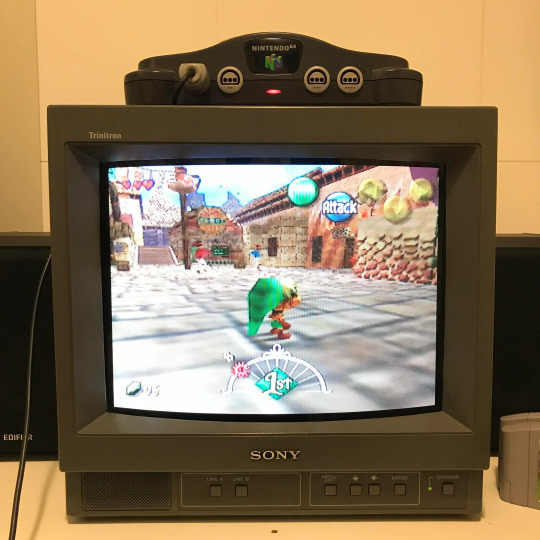
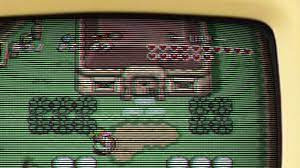
As far as I can tell, there is a few things going on here that I can emulate in my game. The first is that the screen is like a convex lens, so I'm going to have to add some form of lens distortion to my camera. The aspect ratio for most of these TV's was 4:3, which will also require a change to the camera. Lastly some chromatic abrasion and film grain to complete the look.
Chromatic abrasion and film grain can both be edited directly from the post process setting so they were the easiest.
For the aspect ratio, I just ticked 'constrain aspect ratio' and set it to 4:3. I also reduced the FOV to 65 to add to the look.
youtube
I found this video based off the backrooms game and the VHS effect in that. It goes over how to add a post process material to sharpen the visuals. It also gave me the idea to add a slight blur to the screen using the blur box as a widget. Another thing mentioned in this tutorial was how to add weight to players moving or turning. I attached the camera to a spring arm and added lag. It would be good to note that this wont work if you have the set control pawn rotation enabled for the camera and disabled for the spring arm, which is how mine was originally. I spent a good half an hour trying to figure out what was wrong with it. The last thing I added was a lens flare just by adding a lens flare image to the post process
youtube
For the lens distortion I found this bodycam effect on YouTube which bends the camera like it was a VHS. I reduced the values to make it fit the VHS look a bit better because it did look more like a police bodycam.
0 notes
Text
Scary Stuff
Making the game scary isn't as easy as it sounds. A lot of it comes down to how you approach the post processing, and with this game, the absence of familiarity. I created fear in my project by making all the people and sounds disappear gradually over time. Because my game was quite short and didn't leave much room to build tension.
I started off by turning of lights and sounds when the player picked up an item on their list. After the first three, the lights would go out completely, and after that you'd be teleported to a duplicate world in the dark, trying to avoid the monster. The absence of life and sound and light create a really eerie atmosphere.
I did this to
0 notes
Text
Monster
There are a lot of ways to make a game scary, through atmosphere or tension or environment design, but a lot of the fear comes from trying to avoid an evil entity in a game. Being the soul of most horror games, my monster is going to have to be pretty good, because ambience and liminal level design can only get me so far.
I decided to go for more body horror when designing my monster because its what freaks me out personally when playing horror games. I also wanted to make it look like its almost human, or that it came from a human to provide some mystery and space to add story or lore.
I started by dragging out all the limbs and contorting and bending them in strange directions to mimic some of the monsters I've researched previously. It's a quadriplegic humanoid with broken limbs that crawls around the mall.
This partnered with the ambience in the end of the game creates a pretty effective moment of fear.

0 notes
Text
Targets 27/11/23
This week I need to finish the mall and the alternate mall. The first step towards this is to just fill in each shop of the mall and add the props on the shopping list.
I need to finish the interiors of the mall
I need to add materials to the mall
I need to create an alternate dimension triggered when the player buys something
Add music for the normal dimension
0 notes
Text
Targets 20/11/23
I got everything on my targets list done last time so I'm pretty happy with where I'm at with the game so far. This week I'm putting a focus on finishing the mall and experimenting with the post processing.
Add more NPC's and their paths
Create models for each buyable prop
Create a warm atmosphere
Create interior for shops (Optional)
0 notes
Text
Ambience
Ambience is a tricky thing to involve in a game. It's not exactly a formula you can follow to make your games feel a certain way, it's also not always scary. Ambience can be used to evoke any emotion in a player.
Fog
Atmospheric fog in unreal is an incredible way to start setting the tone for my game. Fog can be used to limit a players knowledge and understanding of the level design in my game leading to an increased sense of discomfort. Colour theory can be extremely useful in this context as well.
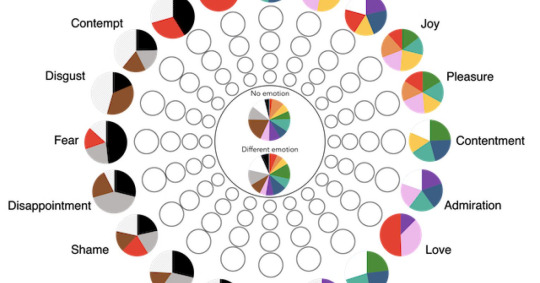
Something like a murky green, brown or white or red, as shown in the chart, is perfect for emulating a sense of fear in the player.
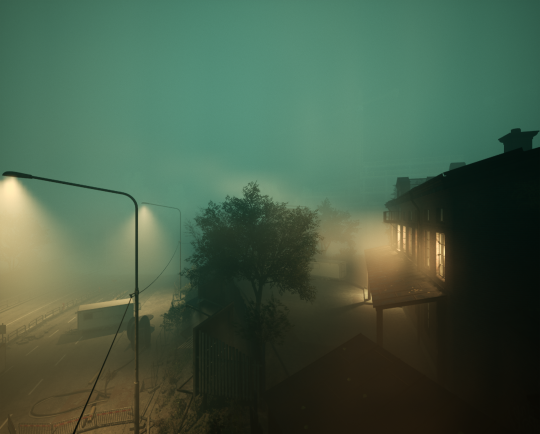
It automatically forbodes aspects of horror in the level and makes the player feel uncomfortable and vulnerable
Warmer colours like orange or yellow can be used to convey a range of other emotions, usually mystery, comfort.
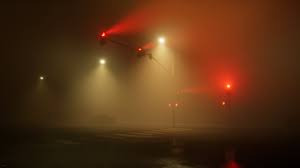
Any use of fog would be an effective means at achieving liminality in my level design
I ended up using a murky yellow green colour and shut off all the lights. Giving the player a torch an removing all light and sound also added to the intense mystery and tension that was building.
0 notes
Text
Multiplayer horror
I think this subgenre is worth exploring because multiplayer games in horror usually have to change the formula of modern horror games and compensate for the lack of isolation by being absolutely terrifying.
Making a multiplayer horror game seems easy in theory but when it comes to making them genuinely scary, it gets a lot harder. Most horror games bank on isolation to create a sense of unease in people, If you can imagine playing a game like alien isolation with a friend, it's automatically going to lose most of its fear factor because each player now has a buffer. They can distract themselves from the terrifying scene they've put themselves in.
Considering these points, there are a couple things I could do to create an effective multiplayer horror game. Change would be a big one, letting the player get comfortable negates any tension or fear the players have, multiple enemy types and evolving gameplay is a good way to keep a hold of the tension. Splitting the players up is an incredible way to keep the game scary, this sense of isolation is ten times worse than that in a single player horror because there's an absence of people. They used to be there and now there not, as opposed to there being no one with you to begin with.
GTFO
youtube
GTFO is a coop horror shooter. You play as prisoners descending into an underground complex to complete the objective. Each alien has the ability to alert the entire room of your presence. A lot of this games fear is built through tension rather than actual scares but it makes for terrifying encounters with the 'sleepers'.
Lethal Company
youtube
This might be one of my favorite multiplayer games at the moment. It does everything perfectly to create effective tension whilst still having multiple players. Firstly, you can choose to explore a vast array of different moons, each moon has it's own enemies and each one has it's own natural hazards keeping the gameplay fresh. The gameplay mechanic sees the players having to continuously enter the building on this moon to retrieve scrap. The proximity chat means players only have to be out of ear range of their team to feel isolated and they have no idea when someone in their team has died. Most monsters have different AI and attack patterns meaning you cant get used to any of them. I can tell you you don't know fear until you've had to listen to your friends muffled screams in the room over as they get eaten by an alien, leaving you alone to collect scrap to avoid being ejected into space.
1 note
·
View note
Text
Enemy NPC
The monster my game revolves around has to be good. A good enemy is crucial for a good horror game. In teke teke for example, the slow stalking behaviour at the beginning of the game, in contrast to the speed and allusiveness it gains throughout it creates a massive sense of fear in the player.
youtube
The first thing to consider in the creation of the monster is how it's going to look. Although not advised to focus on art before gameplay, I think in this case it will be better to base the monsters movement off of it's look because of it's intended size and stature. I've said in a previous blog that I want my monster to be extremely large with deceptive speed and agility. I think it would be much more effective to have a tall, disproportionate, stalking monster. It should patrol the mall slowly, potentially even purposefully avoiding the player at times to mess with them.
To start, I wanted to research the creatures that have given me some scares over the years, the first being the baby from resident evil.



One of the fears I had was realised by seeing this thing. Creatures that don't make biological sense, things that have some semblance of a humanoid creature but aren't quite there. A liminal organism if you will. This thing haunted my nightmares for weeks after I'd encountered it in the game because of it's semblance to a baby, something that should always be wholesome and cute and it's been horrifically deformed and mutated.
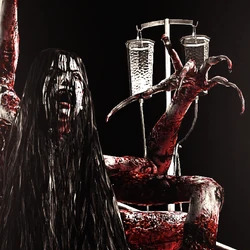

Although I haven't played this game, the play through I watched on it alone was enough for me. It's the same sort of concept with the body horror. Extra limbs is always a no go for me so i'm going to have to explore this for my game.
1 note
·
View note
Text
Good NPC's
To create the absence of life, I need life to begin with. My malls going to be filled with normal people walking around doing whatever. These NPC's do not need to be as complex as my monster's AI will be so I really only need them to be able to move to a certain location. When I tried to use an exposed vector 3, the NPC's just weren't moving and in looking for a fix I decided to use target points instead.
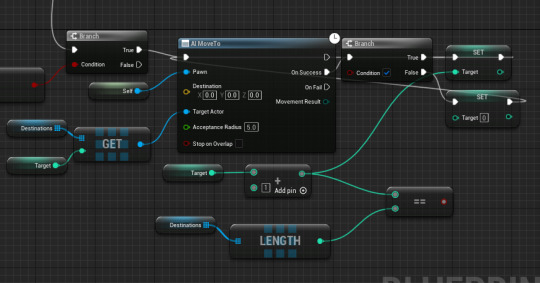
I then have an array variable where I can input what target point I want the NPC to move to. It took a while but I added and mapped over 80 NPC's for the mall. One issue I did keep running into was when the NPC's would collide and stop moving.

Because the middle target point was used by so many of the NPC's I had to add three new points to avoid traffic. I may have to do this with the other points but I haven't watched each NPC's full journey yet.
I also wanted to add states to my NPC's which can be edited through the viewport. This will let me change weather NPC's are walking, idle or dancing. All the animations I used for this can be found on Mixamo.
I had to create an enumerator to hold my states so I could access them as a drop down and change the animations easier.
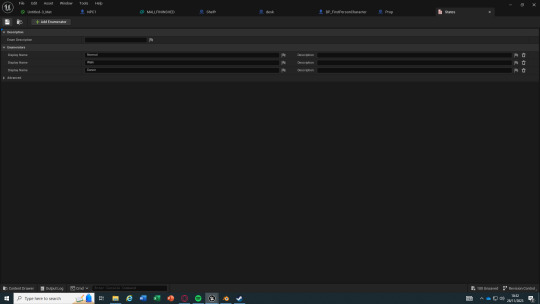
To make my character walk when the normal state is active I created a branch to check the NPC's state, if it's true the NPC can walk.
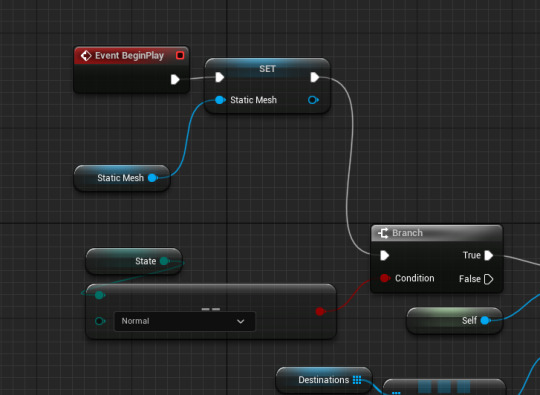
I created an animation blueprint with all of my imported animations.
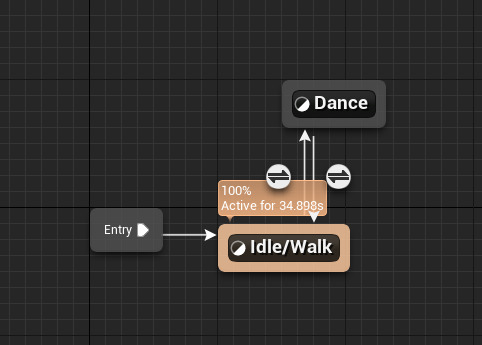
From idle/walk to Dance I checked if the state was 'Dance' and from dance to Idle/Walk I checked if the state was Normal. This means if the State is set to dance the dance animation can play and vice versa. For the idle/walk I opted for a blend space which will blend the animation between idle and walking incase I wanted to ramp up on the animations. Originally I tried to achieve the same effect by using all of the animations separately but this not only didn't work but also ended up being incredibly complicated the way I was doing it.

The best part about this is all I need to do to add a new state is import the animation and add it to the animation blueprint in the same way.
0 notes
Text
NPC movement - research
My games enemy has to be good to properly instill fear where I want it. If I lean heavily on tension, build-up and panic, there isn't going to be a need for jump scares every other second. Not to mention, once the player gets desensitised to them, the only thing they do is break immersion and annoy the player. If I use the legacy camera shake in addition to controller vibration whilst the monster is chasing the player, that could provide panic pretty easily. For a broader sense of buidl-up, I could mess with the players mind, moving things to places they shouldn't be, changing the layout of the mall and creating unnatural structures.
It steals
youtube
This game flips the standard run and chase sequence of normal horror games. The enemy slowly stalks the player and hides when the player sees it. This not only creates a sense of unease through unknown enemy AI but also through making the player check every path to make sure they aren't being followed. In the hide and seek game mode, the player has to avoid finding the creature whilst searching for blue orbs. If you find it it chases you until you hide. These different enemy AI's add a new depth and eeriness to a casual horror game. I really like the idea of having a slow stalking type enemy patrolling the mall. Because I have quite a large map I think this would be a lot more effective having large slow enemy as opposed to some smaller fast ones.
Alien Isolation
youtube
Alien isolations AI is well known for being arguably the best enemy AI ever. Depending on the difficulty it can track players actions and evolve itself. Although the aliens director AI always knows where the player is, the alien AI can only attack the player if it senses them. Distractions you can throw to get the alien away from you decrease in efficiency the more you use them and the alien can evolve around your movements to intercept your plans, all without ruining the story aspect of the game. This is the best example of a stalker AI in any video game out at the moment. Although I doubt I can achive something of this caliber with the rest of my time, I would like to try and explore having my monster emulate intelligence and also have some scripted encounters to hold the tension.
0 notes
Text
Liminal architecture
Liminal spaces are always in a place that can feel like a transitional place. Like I mentioned in my previous post about liminal spaces, they are often places that are intimately familiar but unfamiliar at the same time. The video I have been watching to gain some level of understanding on liminal space architecture compares it to uncanny valley for places.
youtube
The general rule with liminal architecture it needs a sense of absence. That doesn't mean they just have to be empty but they have to feel like there is something missing that should've been there. There was a subgenre birthed out of architectures interest in liminal space called super modernism.
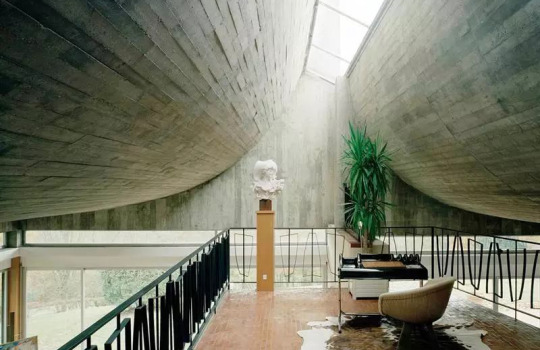
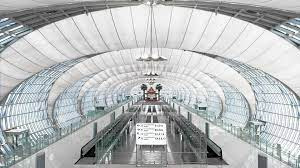
These buildings can invoke a feeling of liminality even when there are people around because they are designed after non-spaces/junk spaces. The idea of a junk space was popularised by the famous architect Rem Koolhaas in a study called 'Junkspace'. It's a direct influence for modern liminal space as it achieves the same thing without an absence of life. Non-spaces are usually super modern but create a sense of loneliness despite being surrounded by people, such as an airport. Places where people are so invested in themselves that you can feel completely alone in a room full of hundreds of people.


Junk space obviously doesn't have to have people in it to be effective at creating loneliness although to me I would rather be in the first image than the second. This is what supposedly remains once super modernism has run its course. The fallout of post modernism.
Another common theme that I want to explore in my own game is the idea that the viewer feels like they're trespassing. By using angles that you wouldn't normally be able to get and getting rid of all human life in a scene, the player would automatically feel like they're not meant to be there, adding to the discomfort and making a more effective horror game. The 'innie outie' house is a good example of this.
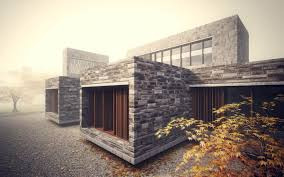
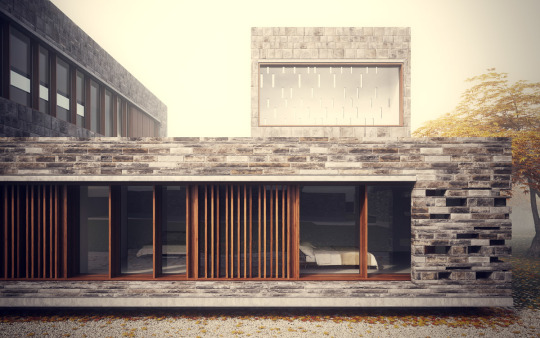
The question would be now, why would an architect aim to create a sense of unease in an audience. The reason i'm doing it is to make the player as uncomfortable as possible but it wouldn't make much sense for an architect to do this, especially if they are going to pitch this house to be constructed. In my opinion, I think liminal space doesn't have to always provoke feelings of discomfort and unease. I think a sense of comfort can be found in knowing you're alone and a place you've never seen before feels familiar which I think is what Peter Guthrie was hoping to achieve with this concept.
0 notes
Text
Targets 13/11/23
This week I'm going to put a focus on creating the games environment and NPC's
Finish shopping list mechanic.
Import mall
Create NPC's
0 notes
Text
Alternative dimension
The dark world - Link to the Past
youtube
Just when you think you've beat the game, link to the past chucks you into an alternate dimension called the dark world. This world shares many similarities with the normal world but everything is slightly off. The colours are different and every NPC sprite has been changed. This lack of familiarity creates unease in players, one of the earliest examples of liminality in video games. My game is going to share a lot of similarities with this games take on alternative dimensions because I need to create the same sense of liminality. I'm going to need to change colours and sprites like this game. different lighting and strange architecture can also achieve this.
The upside down - Stranger things
Kingdom hearts
0 notes


